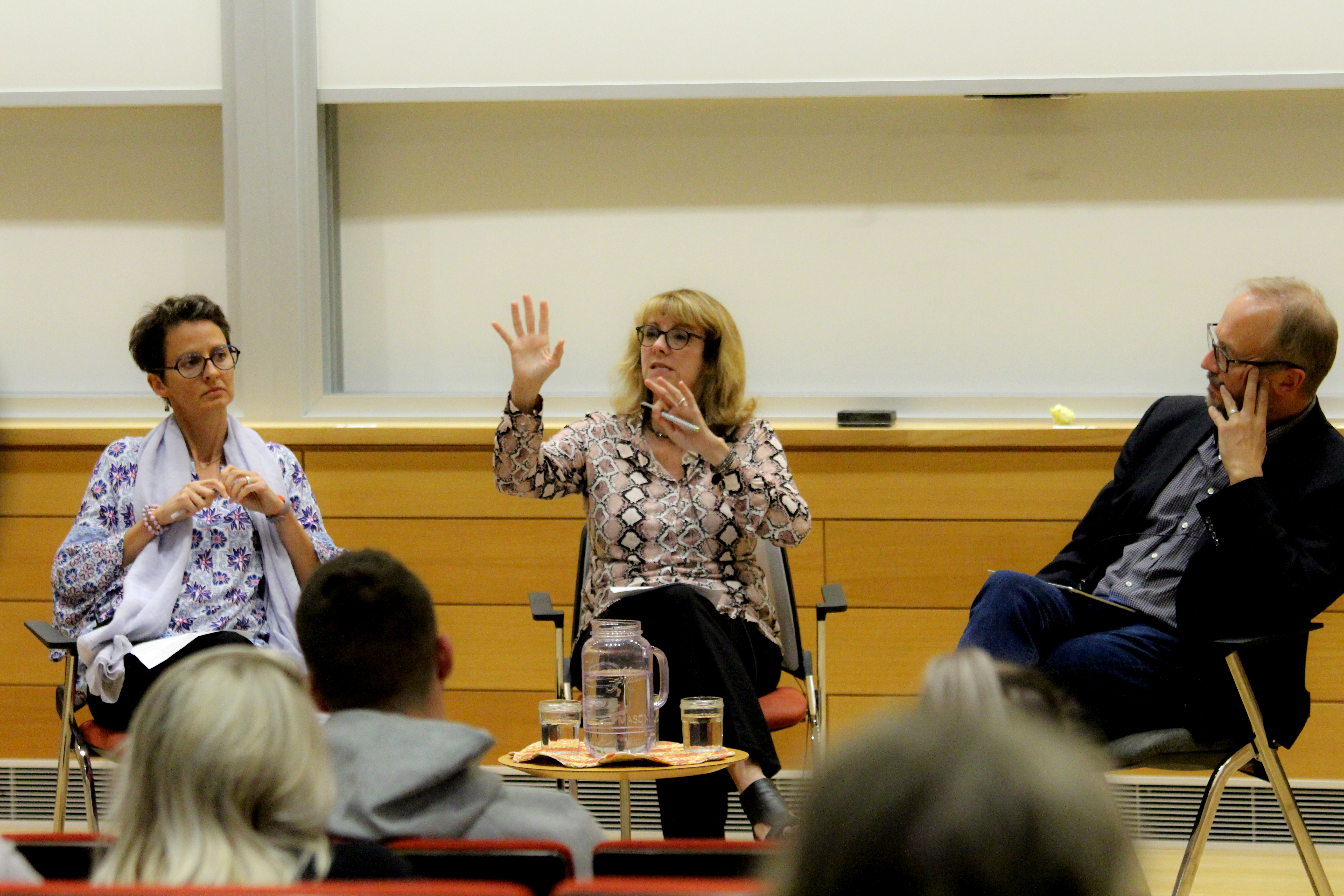Professors Karl Aspelund, Cheryl Foster, and Karen de Bruin discuss good design while keeping the environment in mind. Photo by James McIntosh.
Last Wednesday, a University of Rhode Island panel discussed how the design community must reform their approach in order to safeguard the planet from impending disaster.
Professor Karl Aspelund of textiles, fashion merchandising and design, Professor Cheryl Foster of philosophy and Professor Karen de Bruin of modern and classical languages and
“What happens when we do design something that is inclusive and that’s beautiful but pollutes or that is an excess product?” de Bruin said. “Something that we don’t need but contributes to the consumer economy that we live in.”
This inquiry sums up the common dilemma faced by designers in the 21st century.
However, many designers know the negative impact their industry has had on the planet.
“We’re one of the most polluting industries in the world,” Aspelund said.
The next question asked at the discussion was, “If the evidence is clear that our planet is heading toward disaster, then why is not more being done to combat this crisis?”
The panel explained that the reason for such inaction is in the way that our economy is set up. One reason why is because of the profit concept. Profit is the most important aspect of a business. De Bruin explained that profit in business is the reason for which we as a society are not “looking at design comparatively around the world, picking the best design for the need, one that meets the common good.”
De Bruin said there is currently too much focus on design brand-new products.
“There are things [existing products and innovations] out there, you don’t have to design something brand new,” de Bruin said.
Foster pointed out that we live in a society where products are simply not made to last. Businesses manufacture products so that after a period of time the product will break or no longer function so that the consumer will have to buy a new one. Furthermore, as consumers, we like to buy new products.
According to Foster, there is a movement happening where young people are deciding not to buy anything new.
“The idea is you go to the store, you go to Savers, you borrow, you share and then as much as possible for everyday use, for functional use, for aesthetic expression, you don’t buy new stuff,” Foster said. “Which means that new things are reserved for the common good. We pour money into public design, into schools, into you know, sometimes buying art.”
Foster then questioned “what would happen to the design world” if such as a movement grows.
“But, what you do at that point is you’re designing things for that kind of longevity and reuse and repurposing,” Aspelund said. “And you appreciate the designed object for its place in that circle, and the material becomes the thing not the object. You start to appreciate the thing for what it is but also for what it can become.”
In her closing remarks, de Bruin called for a coming together of society.
“It’s just not Democrats that are worried about the environment,” de Bruin said. “Good design shouldn’t just be partisan.”





